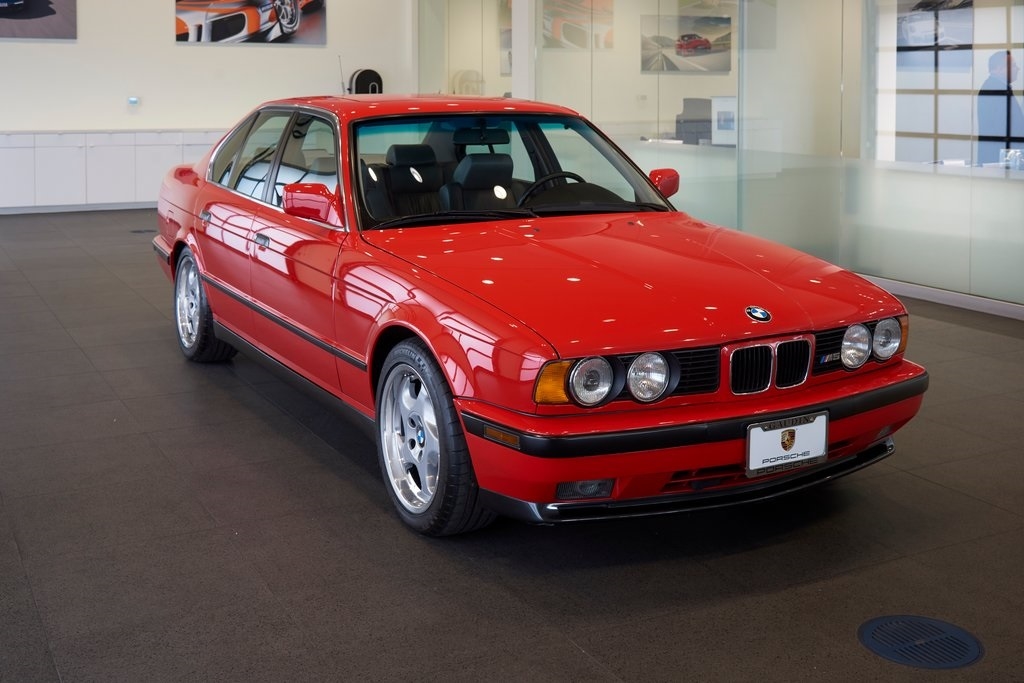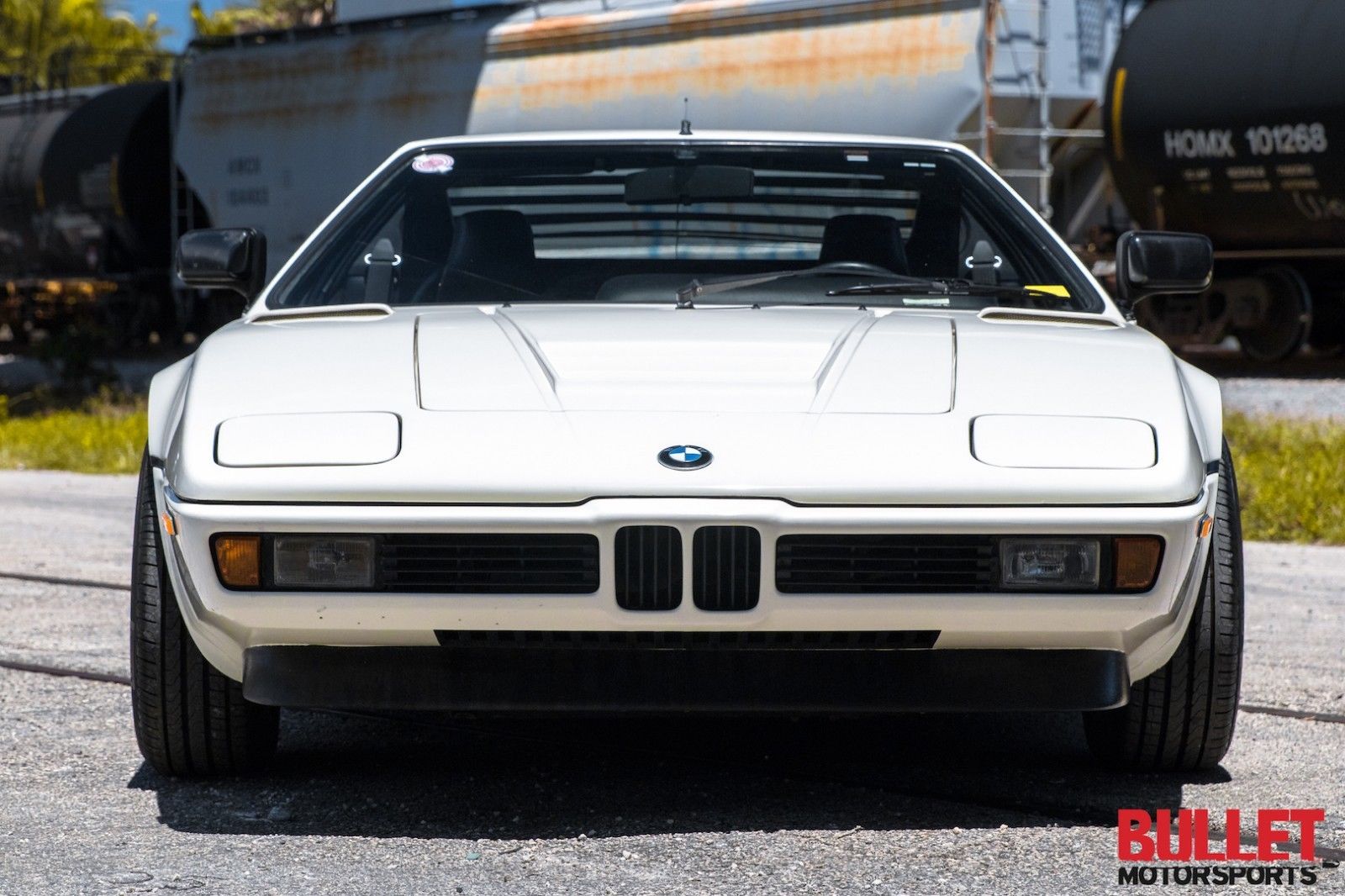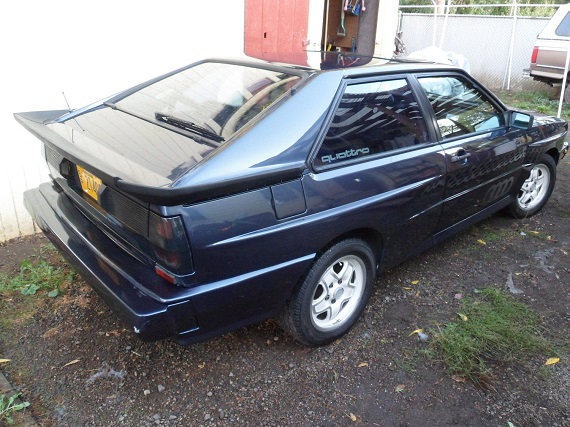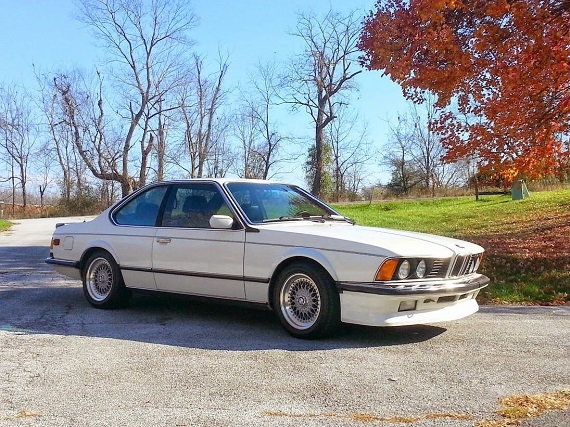For years we’ve banged on about the E34 M5, a conundrum of the M lineup. It’s got all the right DNA to be a classic, yet like the similar 944 Turbo has generally languished in value compared to similar products. That may sound like a broken record on these pages, but it’s a tune which is both catchy and sweet-sounding for BMW fans because it means they’re getting more car for their money. They’ve got plenty of the right ingredients – the last of the individual throttle body S38 motors producing 315 horsepower, Motorsport details throughout, a great subtle look which still is commanding of respect, supreme road manners and limited numbers – only 1,678 were imported. It’s the right recipe for a future classic. This chassis is still generally overlooked compared to the E28 and E39 models, but those that have spent some time behind the wheel of these well engineered, hand-built Q-Ships proclaim they’re one of the best BMW products made. Recent market activity in since 2016 has started to remix the tune, though, and E34s have been on the rise. Hagerty currently places top value on 1991 M5s at over $70,000 – steep sounding given what many traded for over the last few years, but perhaps more in line with their legendary build quality and performance especially when considering their siblings. So let’s see what a top value M5 looks like today:
Tag: BMW Motorsport GmbH
Update 1/31/2019: The seller has relisted this M1 now at $695,000 – nearly $200,000 down from last Spring, but probably still ahead of the market.
Update 7/29/18: After listing in May at $875,000, the seller has dropped the price to $725,000 – still high for the model, but not as far out of line. Will it sell this time around?
I give Audi a lot of credit for bringing the R8 to market. It took a fair amount of gall for a company best known for mid-range all-wheel drive luxury sedans to up and produce a supercar-beating mid-engine road car capable of being used year-round and every day. It’s a feat nearly without precedent. Of course, I said “nearly”.
That’s because BMW pulled off a similar trick the best part of thirty years before Audi did it. And arguably the development of what would become BMW’s fledgling Motorsports division was even more impressive than what Ingolstadt pulled off. The M1 burst onto the scene at a time of economic austerity, global oil crises and came from a company who not only didn’t have a history of producing such cars, but didn’t have connections to others who did (unlike Audi’s corporate Lamborghini partnership).
Speaking of Lamborghini, because of BMW’s lack of expertise in supercar design it was the Sant’Agata firm that was employed to produce the M1. But because of Lamborghini’s lack of expertise at being…well, a company capable of producing something on a schedule, BMW engineers had to first liberate the early molds from Italy and then find someone who could produce the car. Ultimately, it was a combination of ItalDesign in Turin, Marchesi metal working in Modena to build the frames and Karosserie Baur in Stuttgart that stuck the M1 together. Though it doesn’t exactly sound like a match made in heaven, and indeed the M1 was a relative sales flop, it has nonetheless grown to cult status as one of the most user-friendly supercars of the late 1970s:
CLICK FOR DETAILS: 1981 BMW M1 on eBay
3 CommentsThere are a few strange similarities between yesterday’s 1987 Volkswagen Scirocco 16V and today’s subject – the much more elusive and legendary BMW M1. Both were sporty cars developed from more pedestrian beginnings. Both featured high-revving dual-overhead cam motors. But the interesting part comes in the sublet of construction, and the design. Both have links to Giugiaro, but both also borrowed heavily from other designs.
In an article I penned for The Truth About Cars last year, I covered some of the development of the Wedge Era and how those spectacular show car designs channeled their design language down to more pedestrian models. One of the stars of that article were the cutting-edge looks from Giugiaro’s ItalDesign – the firm, and man, responsible for some of your favorites such as the basic shape for the Audi Quattro. But while the Quattro launched its brand into the luxury realm and redefined the 80s, the undisputed German star of the wedgey wonders was the BMW M1.
CLICK FOR DETAILS: 1981 BMW M1 on eBay
3 CommentsThough they’re the juggernaut of BMW performance today, the reality is that there were quite a few stumbling blocks and it took many years for BMW Motorsport GmbH to establish themselves as the benchmark for German performance. Though many consider the M1 the genesis of BMW M, in fact the brand was born nearly a decade earlier with the introduction of the 3.0 CSL. The high performance E9 was built together with BMW’s competition department, a relationship which ultimately resulted in the birth of BMW’s Motorsport division. A few years later, the new entity would give birth to an equally legendary creation, the 2002 Turbo. But when it came to the first car to carry the “M” badge, it was of course the legendary M1 with its motorsport derived M88/1 double overhead cam inline six screaming in the middle of the car. You’d think this recipe carried over immediately to the sedan range, but that was not immediately the case. First, BMW produced the M535i in the E12 chassis. Though the E28 model of the same designation was mostly an appearance package, the E12 model was turned up over the rest of the range – but not with the M88; BMW instead relied on the M30 to power the M535i. Then, there was a year where nothing happened; the M1 was out of production, the E12 was replaced by the E28, and ostensibly BMW had no real performance models. That was remedied at the 1983 Frankfurt Motor Show, where a juiced up version of the 635CSi was offered. It was labeled the M635CSi; but unlike the M535i, under the hood wasn’t the venerable M30 that powered the normal 635CSi. In its place, the Motorsport division decided to slot the M88, now with /3 designation; the result was 286 horsepower – a staggering figure at the time, considering that the contemporary Porsche 930 was considered fairly bonkers with a little over 300 horsepower and though it looked much larger, the early E24s only weighed about 200 lbs. more than the Porsche. Coupled with some aerodynamic tweaks, heavier duty suspension, brakes and larger wheels and tires, the result was the menacing presence worthy of the nickname “Shark”. For all intents and purposes, this was really the first “M” car for the masses:









